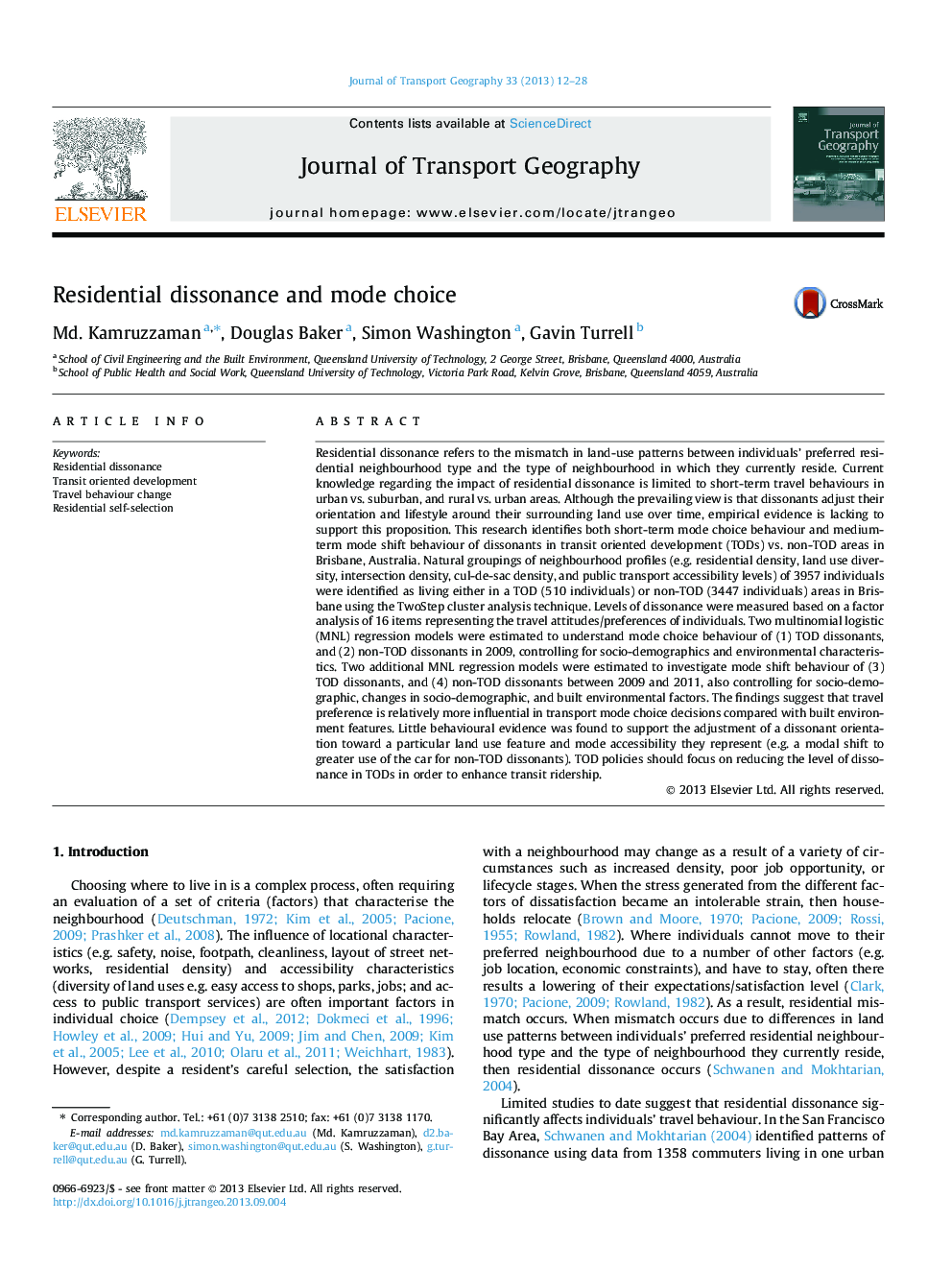| کد مقاله | کد نشریه | سال انتشار | مقاله انگلیسی | نسخه تمام متن |
|---|---|---|---|---|
| 1059107 | 1485434 | 2013 | 17 صفحه PDF | دانلود رایگان |

• The impact of residential dissonance on mode choice is verified using panel data.
• Changes in mode choice behaviour of TOD and non-TOD dissonants are measured.
• Travel preferences are more important in mode choice than built environment.
• Attitudinal importance in mode switch behaviour is demonstrated.
• Dissonants were slow to adjust their behaviour to surrounding land uses.
Residential dissonance refers to the mismatch in land-use patterns between individuals’ preferred residential neighbourhood type and the type of neighbourhood in which they currently reside. Current knowledge regarding the impact of residential dissonance is limited to short-term travel behaviours in urban vs. suburban, and rural vs. urban areas. Although the prevailing view is that dissonants adjust their orientation and lifestyle around their surrounding land use over time, empirical evidence is lacking to support this proposition. This research identifies both short-term mode choice behaviour and medium-term mode shift behaviour of dissonants in transit oriented development (TODs) vs. non-TOD areas in Brisbane, Australia. Natural groupings of neighbourhood profiles (e.g. residential density, land use diversity, intersection density, cul-de-sac density, and public transport accessibility levels) of 3957 individuals were identified as living either in a TOD (510 individuals) or non-TOD (3447 individuals) areas in Brisbane using the TwoStep cluster analysis technique. Levels of dissonance were measured based on a factor analysis of 16 items representing the travel attitudes/preferences of individuals. Two multinomial logistic (MNL) regression models were estimated to understand mode choice behaviour of (1) TOD dissonants, and (2) non-TOD dissonants in 2009, controlling for socio-demographics and environmental characteristics. Two additional MNL regression models were estimated to investigate mode shift behaviour of (3) TOD dissonants, and (4) non-TOD dissonants between 2009 and 2011, also controlling for socio-demographic, changes in socio-demographic, and built environmental factors. The findings suggest that travel preference is relatively more influential in transport mode choice decisions compared with built environment features. Little behavioural evidence was found to support the adjustment of a dissonant orientation toward a particular land use feature and mode accessibility they represent (e.g. a modal shift to greater use of the car for non-TOD dissonants). TOD policies should focus on reducing the level of dissonance in TODs in order to enhance transit ridership.
Journal: Journal of Transport Geography - Volume 33, December 2013, Pages 12–28